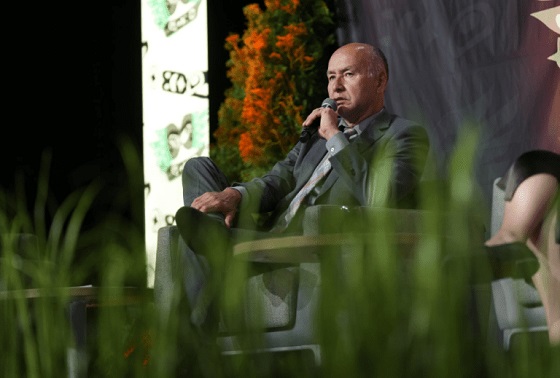Bruce Dowbiggin
NHL Stardom: It’s A Money Thing
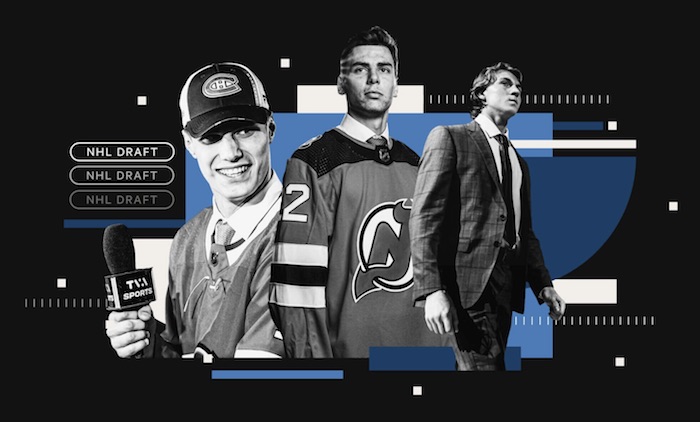
[Sign up today for Not The Public Broadcaster newsletters. Hot takes and cool slants on sports and current affairs. Have the latest columns delivered to your mail box. Tell your friends to join, too. Always provocative, always independent.]
One of the striking observations from the otherwise uneventful #nhldraft2022 was how homogenous the kids were from a social POV. These weren’t humble farm boys and blue-collar sloggers. This wasn’t J.C. Tremblay, one of 13 kids from Bagotville, Quebec, or Gordie Howe from tiny Floral, Saskatchewan. These prospects were middle-, upper-middle class products of a multi-million dollar development process. It’s not a sport for paupers.
It also helps to have a parent or supporter who’s been in the hockey industry, too. Brad Lambert, drafted by Winnipeg in the first round, is the nephew of NY Islanders coach Lane Lambert. St. Louis pick Jimmy Snuggerrud is a third-generation player who father Dave played four NHL seasons. Etc.
As we asked in August of 2021 , “Are today’s superstars a product of more than talent? Are they also the products of an expensive, exclusive grooming process that leaves the Bobby Hull farm-boy archetype in the dust?
One hint of the benefit of having access to resources and people within the hockey industry is the annual spate of sons of former NHLers now being drafted each summer. In the recent draft, there was a plethora of progeny selected, many at the very top of the draft. No other league has such a high percentage of sons being selected.
There have always been a few NHL father/ son duos. Gordie Howe’s boys and Bobby and Brett Hull spring to mind. But they were not as pervasive in the league as they are today. Witness the 2021 Draft that saw a host of familiar family names getting new surnames.

Cole Sillinger (Mike), Tyler Boucher (Brian), Josh Doan (Shane), Redmond Savage (Brian), Ryan St. Louis (Martin); Shane Lachance (Scott); Nick Malik, Marek), Justin Robidas, (Stephane), Jackson Blake (Jason) and Chase Stillman (Cory) were among the sons of famous fathers drafted. Others were signed as free agents.
It was no fluke. A glance around the NHL shows many sons of former stars getting steady work. Matthew and Brady Tkachuk (Keith), Kasperi Kapanen (Sami), Brandon Sutter (Brent), William and Alex Nylander (Michael), Sam Reinhart (Paul), Max Domi (Tie), Samuel Poulin (Patrick), Tag Bertuzzi (Todd), Ryan Johnson (Craig), Tyson Barrie (Len), Landon Ferraro (Ray), Marcus and Nick Foligno (Mike), Nolan Foote (Cal), Ryan MacInnis (Al) Brendan Lemieux (Claude), Ryan Donato (Ted), Daniel Audette (Donald) and Dominic Turgeon, (Pierre) are just a sampling of the direct relationship between father and sons.
The hockey pipeline is full of young men whose fathers could give them a hockey education but who also knew many of right people to tap into. The sophisticated training and arduous diet regimes are getting more like Tom Brady and less like Gump Worsley. And they’re expensive— even in Howe’s home nation of Canada which honours its roots.
This discipline and access is reflected in the United States where the boom in hockey participation is resulting not in farm boys and rink rats but in privileged sons and daughters of highly paid NHL stars getting an inside track on make the league or the Olympics.
NHL veterans in both the U.S., Europe and Canada know the inner workings of agents, independent training academies and skill trainers to help their sons past some of the highest hurdles in development. If they handled their millions properly they also have the funds to open doors for young stars.
As we wrote in this obit for Walter Gretzky, the elite training he gave Wayne has spawned many costly and hard-to-access training methods for people like him, a former telephone technician.
“With the success of Gretzky’s training model— plus the importation of European skill training— families realized that if their sons and daughters wanted to be world-class athletes they were going to have to reject the Don Cherry ”Try Harder” school and imitate the techniques Gretzky had used on his son. Within a decade, getting the proper coaching and fitness to become a star became a growth industry.
Power skating, off-ice training, ice rentals, new equipment, travel and coaching all became necessary to get a leg up on the competition. It was also very expensive. Having the resources to send your child to the top fitness gurus like Gary Roberts or to place them in a school like Shattuck St. Marys (as Sidney Crosby was) becomes a process costing tens— or hundreds— of thousands of dollars.
Author Malcolm Gladwell popularized the notion of taking 10,000 hours to translate talent into the finished product of a genius. It takes money to allow a young person that time, money that only a select number of families can provide. If you are a child in a single-income home or in a remote part of the country away from facilities, equipping and training a young prospect quickly gets out of the reach of parents of modest means.
Perhaps the most telling development story was that of Montreal goalie Carey Price, whose father bought a $13,000 four-seat Piper Cherokee plane to fly young Carey back and forth 320 kilometres to hockey practices all winter in northern B.C.
Where the NHL was predominantly players from blue-collar backgrounds till the Euros arrived in the 1970s, today it is often constituted of young men from families of means and education. The idea of the farming father of the six Sutter brothers affording his sons’ training today is highly improbable. Today’s NHL has a number of college-educated players and products of dedicated European training.
In that way, through no fault of Walter Gretzky, hockey has become a sport for families of means or friends with means. He taught parents that the proper training and equipment was imperative. And that doesn’t mean simply the rink in your backyard. When a new pair of skates cost $500, a stick costs $125 or a set of goalie equipment runs into thousands of dollars you are losing a segment of the population to financial costs. And so Walter’s legacy of training development is forever tied to a big price tag.”
To say nothing of the progeny of NHL stars helping give their kids a hand-up in making it to the league and its vast piggy bank.
Bruce Dowbiggin @dowbboy is the editor of Not The Public Broadcaster (http://www.notthepublicbroadcaster.com). The best-selling author was nominated for the BBN Business Book award of 2020 for Personal Account with Tony Comper. A two-time winner of the Gemini Award as Canada’s top television sports broadcaster, he’s also a regular contributor to Sirius XM Canada Talks Ch. 167. His new book with his son Evan Inexact Science: The Six Most Compelling Draft Years In NHL History is now available on http://brucedowbigginbooks.ca/book-personalaccount.aspx
Bruce Dowbiggin
Canada’s Humility Gene: Connor Skates But Truckers Get Buried
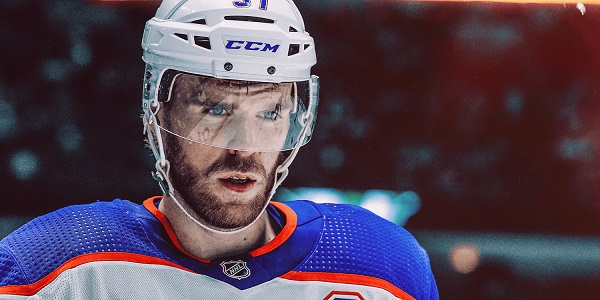
My friend and colleague Roy MacGregor used to talk about the “humility gene” in Canada’s hockey heroes. From Gordie Howe to Jean Beliveau to Wayne Gretzky it described the aw-shucks attitude of the top players in the game, who are as Canadian as Roy’s famous canoes.
The refusal to go Hollywood like the NFL, NBA or MLB stars was a defining characteristic of the hockey culture that once bound Canadians. For decades this “fear of flying high” was used by the NHL against the stars when it came to getting paid. Even when players belatedly started a union, their executive director Alan Eagleson did everything he could to suppress salaries and please his buddies in the owners’ box.
What Eagleson’s treachery didn’t accomplish the Tallest Wheat syndrome in Canada did . “You’re paid to play a child’s game. When is enough money enough? You should be grateful the owners let you wear their uniform.” For most players the fans’ withering guilt was the worst fear. In short, outsiders are not allowed to rip on Canada’s stars, but Canadians themselves are free to bring low their heroes.
In our obit for Bob Goodenow, Eagleson’s successor at the NHLPA, we described the slow, painful climb to final self determination in the 1990s. “It’s hard to understate the mentality he had to change… Goodenow convinced hockey players that to earn their worth in the market they had to stick together in negotiations.”

This is relevant this week as Canada’s star player Connor McDavid resurrected the humility gene in Edmonton. The greatest player in his generation McDavid held all the cards to negotiate a new contract with the Oilers or whomever he wanted. Everyone outside Edmonton— particularly his hometown Toronto Maple Leafs— wanted a piece of McDavid and was willing to pay a huge price for him.
As a hint at what McDavid might earn, Minnesota’s Kirill Kaprizov, who’s never won a major award or played past the first round of the playoffs, just received $136 million for eight years ($17M per year). The new CBA allows that soon the top players could earn as much as $20 M a year.
But this was humble time in a Canadian city mortified that its coolest kid was leaving. What to do? Being a self-deprecating Canadian and successor to the humility gene McDavid chose to halve the baby, taking a preposterously low $12.5 a year for two years in Edmonton while also making it obvious he’s gone should the Oil again fail to win the franchise’s sixth Stanley Cup.
It was the most Canadian solution to wanting to be a good guy for a city that, trying to being kind, isn’t Palm Beach or Brentwood. While hinting he will cash in later.
For certain the low-ball conclusion to what was to be a season of painful interviews about his future did nothing to endear McDavid to his fellow NHLPA members. Notwithstanding Kaprizov’s haul, McDavid’s cratering will put a chill on salaries for stars while putting a big smile on the face of NHL commissioner Gary Bettman. He has players back in the barn, and he has Canada to thank for it.
We saw that same Canadian herd instinct in the election when the Liberals marshalled ex-pat Mike Myers to reinforce the suppressing instinct. Exposed by Trump for their handling of their economy the past 10 years the Laurentian elite recoiled in horror, preferring the sunny fairways of self delusion over the reality of a dysfunctional nation.
The best bookend to McDavid’s humility is the concurrent legal resolution to the Truckers Convoy of 2022, a non-violent event (okay, someone pissed on the Cenotaph) that convulsed the nation for three weeks. If a Covid mask obscured your view of the circus let’s just say it was a sit-in by truckers upset with the arbitrary virus/ vaccine actions inflicted by Justin Trudeau’s government.

While Trudeau hid beneath his desk the truckers frolicked next to Parliament Hill, honking horns and playing on Bouncy Castles while the Hill’s media entertained thoughts of Lenin seizing power in 1917. The reality of the demonstration— no guns, no breaking down the doors of Parliament, no firebombing Trudeau’s residence— was lost on locals inconvenienced by long lineups at Shoppers Drug Mart. There was no mention of regime change or insurrection. Except in the eager-to-please-Justin media.
The high-profile stunt from the West clearly Irritated Woke Canada clinging to rumours of MAGA invasion (still embraced by these spares ), firebombing and CBC suggestions of Putin espionage demanded the full weight of the law for organizers Tamara Lich and Chris Barber.
So Trudeau sent in mounted police to bowl over grannies, and his justice droogs threw the book at the evil doers behind the convoy. Okay, they were charged with mischief. Remember. Not assault. Not destruction of property. Not subversive behaviour. Not overthrowing government. Not possession of weapons. All this performative justice applauded by Canada’s purchased media. Even when the OPP head of intelligence found no credible evidence of threats to national security, extremism, foreign influence (e.g., Russian or American sources, or Donald Trump), or plans for violence.
Because you can’t flaunt Canada’s Liberals and get away with it. So Lich and Barber were keel-hauled through the Canadian justice system and jails for three years. Huffy prosecutors and tendentious judges made the proceedings look like The Mikado, slapping the pair with criminal records and house arrest for not being sufficiently contrite to the Laurentian elites.
They still face civil charges from people whose bed times were upset by the truckers. And the judge hinted that they’ll be made to pay for the cost of cleaning up Wellington street after turning it into a party zone. But by God, they’ll think twice about challenging the federal liberals again.
And so, kids, our lesson? It’s okay to pretend humility in Canada. Just don’t dare get above your station.
Bruce Dowbiggin @dowbboy is the editor of Not The Public Broadcaster A two-time winner of the Gemini Award as Canada’s top television sports broadcaster, his new book Deal With It: The Trades That Stunned The NHL And Changed hockey is now available on Amazon. Inexact Science: The Six Most Compelling Draft Years In NHL History, his previous book with his son Evan, was voted the seventh-best professional hockey book of all time by bookauthority.org . His 2004 book Money Players was voted sixth best on the same list, and is available via brucedowbigginbooks.ca.
Bruce Dowbiggin
Elbows Up Part Deux: Liberal Canada Now Riding The Blue Jays
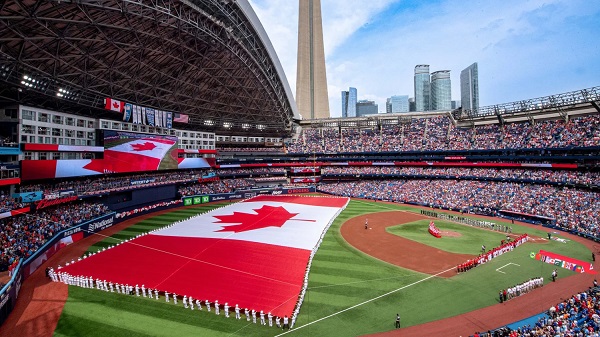
And you thought Elbows Up was just a hockey thing? Ha! The folks who marketed the Mike Myers hockey election campaign to use Donald Trump to distract Canadians have decided that baseball fans must too be swept up in patriotic fury to support the governing Liberal minority. All over a baseball team with zero Canadians on its roster.
This from the nation that half an hour ago was telling the world Canada was a genocidal settler tyranny burying murdered babies in the moonlight. Go figure.
Rogers Media is running commercials during the Blue Jays AL Divisional Series boasting in Liberal red and white “Proud owners of Canada’s national team”. (What team owner has ever put itself above the title on a sports team?) If you haven’t caught that ad there are others Rogers’ ads extolling its magnificence in giving Canada the highest telephone bills this side of Botswana. Oh wait… They say, Go Jays Go, Canada’s national team. Sorry about that.
The team’s announcers are also being made to read verbatim prefab trite slugs about the story of the Blue Jays not being written yet. (We counted three doing the hype before Gm. 1.) Watching the proud-as-punch onslaught from the team’s owner one would think this has to be more than Vlad Guerrero uber alles. And, of course, there is. Rudyard Griffiths, publisher of The Hub, calls it part of the “soft, silent takeover of the nation’s press”. Having used public money to bribe… er, support even the richest media in the country Liberals can count on their support for tongue bathing of Mark Carney’s faculty lounge.
The intro for Game One of the ALDS lathered the “Canada’s team” lard. You’re supposed to think its the 1992-93 World Series all over again. Don’t pay attention to those MAGA cranks in the corner. Rogers is not alone. Much of the advertising during the Jays/ Yankees equates Canada’s team and Canada proud. The advertisers on the games are punctuating ads with a “made in Canada by Canadians” angle (even as jobs flee the country).

But never has the Laurentian Elite of Canada needed a distraction from the mess of Canada’s Liberal hegemony. It can’t be seen that Trump was correct stating it was a better deal being part of the U.S. Samples of Elbows Down:
Canada has no mail system.
“Hollywood North” just got torpedoed by Trump.
Government financial watchdog said the economy is “unsustainable”
Country is in cost-of-living, unemployment and housing crises.
Imperial just let go 1,000 employees and sold its Calgary HQ.
There’s plenty more. Like the virtuous refusing to visit the U.S., the Jays’ insertion into the mindset of Boomer Canada is providential to advertisers who make a living pitching the Liberal brand. Almost as precious as “Our” team is the concept of the Blue Jays as a national team. It seems like only yesterday they were deposing the previous national team, the Montreal Expos. The ‘Spos had aided Toronto in getting a franchise in 1977. When Toronto sputtered in the early days the Expos gave them oxygen. But as we wrote in July of 2023, the newcomer turned on their National League cousins.

“As the Jays went from weak sister to equal partner to dominant team on the field winning the 1992-93 World Series, their tone about letting Expo games generate income in their territory grew less than cordial. Labatt Breweries owned the biggest, most lucrative market in Canada. And only they should profit from it.
This exposed the fundamental weakness of the Montreal franchise. The Olympic Stadium was proving to be a cold, fan-unfriendly disaster. Hundreds of thousands of English speakers had left the province when the Parti Québecois took power. At the same time as initial owner Charles Bronfman was tiring of coming up short on the field and repeated labour stoppages, the Expos were threatened with a severe hit to their broadcast revenues.
Their friendly sharing of MLB in Canada with the Jays now appeared naïve. MLB said the Expos could control Quebec and the Maritimes, but it would have to stay out of southern Ontario. McHale could see the writing on the wall. Owner Bronfman appealed to then-commissioner Bowie Kuhn for relief, saying this ruling would “ghettoize” the team within Canada. His intent on buying the club in 1969 had been to “bring Quebec into the nation”. Instead, the team he’d encouraged to join MLB was freezing the Expos out of the large English speaking markets.
After hearing from the Jays, MLB commoner Bowie Kuhn allowed the Expos to show 15 TV games a season in Ontario. McHale and Bronfman knew this was inadequate. As the Jays started getting into the postseason in 1985 and the Expos sank in the NL the die was cast. Making it worse, the Canadian dollar began its plunge that ended with a 62-cent dollar versus the U.S.

The 1994 season, in which Montreal had the best record in MLB, was cancelled. Bronfman sold the club to a consortium of owners without Bronfman’s means. By 2000, attendance nosedived as the Expos dumped their great core of Walker, Pedro Martinez, Moises Alou and John Wetteland. By the early 2000s, new American owner Jeffrey Loria was actively trying to sell the team to investors who’d move it to the U.S.
By 2005, the Expos were sold to new owners in Washington who renamed the club the Washington Nationals. Loria, meanwhile, was allowed to buy the Florida Marlins franchise, which he ran into the ground as he’d done to the Expos.
The Blue Jays, meanwhile swept in to capture the entire Canadian sports TV audience. They are today valued by Forbes magazine at a cool $2.1 billion. There was talk of transferring the Tampa Bay Rays to Montreal but that evaporated when local Florida politicians promised lawsuits. MLB is now talking about possibly returning to Montreal as an expansion club should they build a proper ball park.
Although who in Quebec has a billion to throw at a baseball stadium is unclear. And how they’d get past the Blue Jays monopoly on broadcast rights in English Canada is also a huge question. Just remember, however, that you needn’t look far to see who had a large hand in killing the Expos.
It was the Toronto Blue Jays.”
Bruce Dowbiggin @dowbboy is the editor of Not The Public Broadcaster A two-time winner of the Gemini Award as Canada’s top television sports broadcaster, his new book Deal With It: The Trades That Stunned The NHL And Changed hockey is now available on Amazon. Inexact Science: The Six Most Compelling Draft Years In NHL History, his previous book with his son Evan, was voted the seventh-best professional hockey book of all time by bookauthority.org . His 2004 book Money Players was voted sixth best on the same list, and is available via brucedowbigginbooks.ca.
-

 Also Interesting1 day ago
Also Interesting1 day agoLocal, Online, and Booming: The Business Shift Happening Across Alberta
-

 Media1 day ago
Media1 day agoResponse to any budget sleight of hand will determine which audience media have decided to serve
-
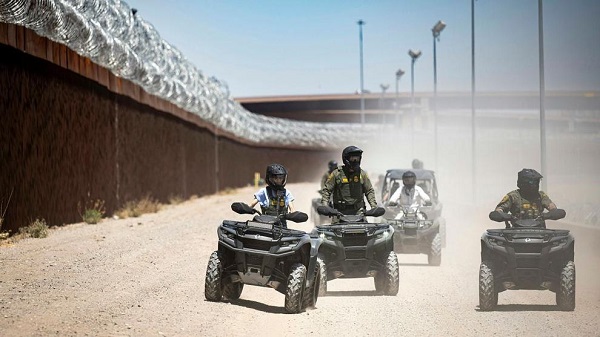
 illegal immigration20 hours ago
illegal immigration20 hours ago$4.5B awarded in new contracts to build Smart Wall along southwest border
-
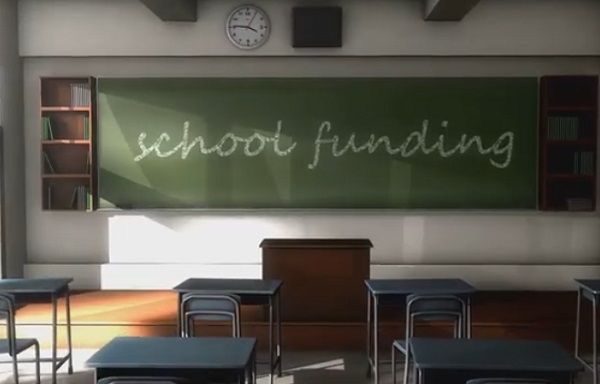
 Education1 day ago
Education1 day agoClassroom Size Isn’t The Real Issue
-
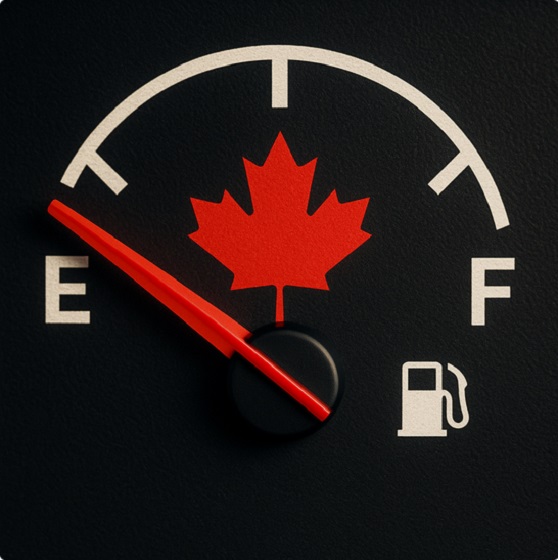
 Frontier Centre for Public Policy1 day ago
Frontier Centre for Public Policy1 day agoCanada’s Democracy Is Running On Fumes
-
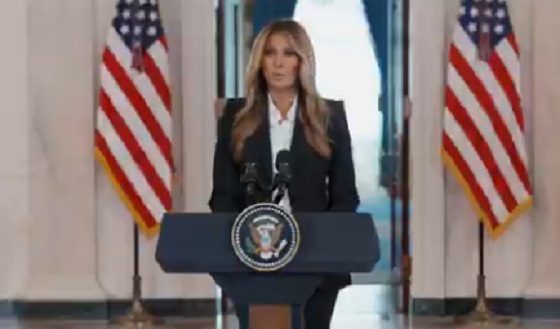
 International20 hours ago
International20 hours agoMelania Trump quietly reunites children divided by Ukraine war
-
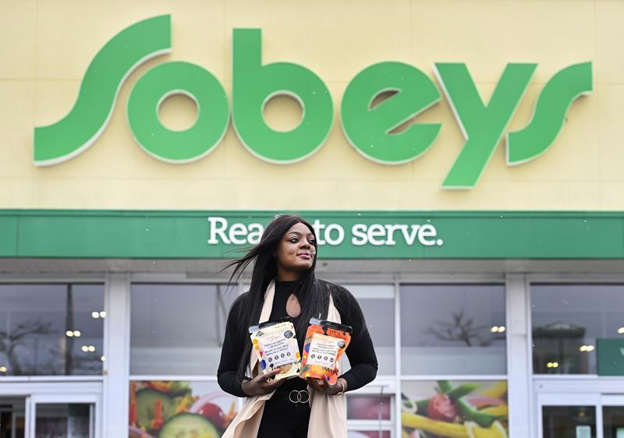
 Business1 day ago
Business1 day agoYour $350 Grocery Question: Gouging or Economics?
-

 COVID-1910 hours ago
COVID-1910 hours agoThe Trials of Liberty: What the Truckers Taught Canada About Power and Protest



